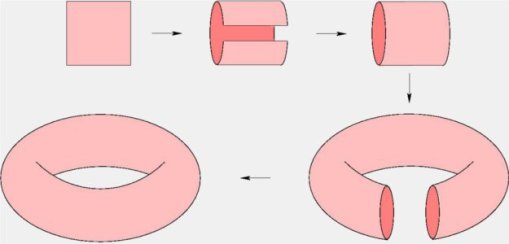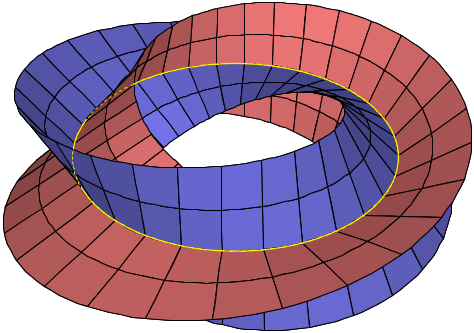Welcome to this week’s Math Munch!
Have you ever looked in a distorted mirror– one that stretched and squeezed your face so that you looked very, very silly? If you like that, check out this program called the Function Explorer that distorts your picture according to different functions!

My cat under the “fraction” function
To use the program, you’ll have to turn on your webcam. Then, select one of the functions listed– maybe similarity, log, or fraction. Then, watch as the image in front of your webcam twists, expands, and repeats as the function distorts the picture!
What’s going on here? The program treats your picture like it’s on something called the complex plane— which is kind of like the regular two-dimensional plane we’re used to, except that some of the numbers multiply strangely. One of the dimensions on the complex plane is made of regular, normal numbers– which, in this situation, are called the “real numbers”– while the other dimension is made of different numbers, called “imaginary numbers.” These are the numbers that do weird things when you multiply them together. Maybe you’ve heard that you can’t take the square-root of a negative number. Well, on the complex plane you can. And when you do, you get an imaginary number!

Windows, under 1/z
If you’re curious about these crazy creatures called imaginary numbers and how they work to make images go wild on the complex plane, I recommend you check out this site. It gives a great interactive explanation of imaginary numbers (and teaches you about fractals, too!). But I also wouldn’t blame you if you wanted to spend a few hours holding things in front of your webcam and seeing what happens to them under different function transformations!

Gummy bears! Which function did this?

Meet Donna
Next up, I’d like to share a fun collection of games with you. They’re all made by mathematician Donna Dietz, and they all have to do with a particular kind of math that I find very interesting– projective geometry! You can still enjoy the games even if you know nothing about projective geometry (and you might learn something at the same time).
 The rules are pretty simple: Donna gives you a bunch of cards with symbols on them. For example, in the version shown here, you get 13 cards with 4 symbols on them each. There are a bunch of different symbols. Your task is to pick four cards to discard and arrange the remaining nine so that the cards in each row, column, and diagonal share exactly one symbol.
The rules are pretty simple: Donna gives you a bunch of cards with symbols on them. For example, in the version shown here, you get 13 cards with 4 symbols on them each. There are a bunch of different symbols. Your task is to pick four cards to discard and arrange the remaining nine so that the cards in each row, column, and diagonal share exactly one symbol.
Donna’s projective geometry games page has links to lots more games (if you think the game with cards in three rows and columns is too easy, try one with five) and information about them.
“What does this have to do with geometry?” you might be wondering. These games show a very important property of points and lines in projective geometry. In regular geometry (which you could also call Euclidean geometry), you can have two lines that don’t share any points– meaning that they’d be parallel. But this isn’t possible in projective geometry. All pairs of lines share exactly one point. How is this related to Donna’s games? If lines are rows, columns, and diagonals of cards, and points the symbols on them…
If you’d like to learn more about how and why Donna developed these games, check out this page!
Finally, I’ve been driving a lot lately. I live in the Bay Area, and there is SO MUCH TRAFFIC AAAAAAAA!!! I went searching for solutions, and I came across this great video by our friend CGP Grey (who also made these great videos about voting theory). There’s a lot of math going on here, even if it isn’t immediately apparent. Can you find the math? (Oh, and can you stop causing traffic jams? Thanks.)
Don’t Math Munch and drive, and bon appetit!









